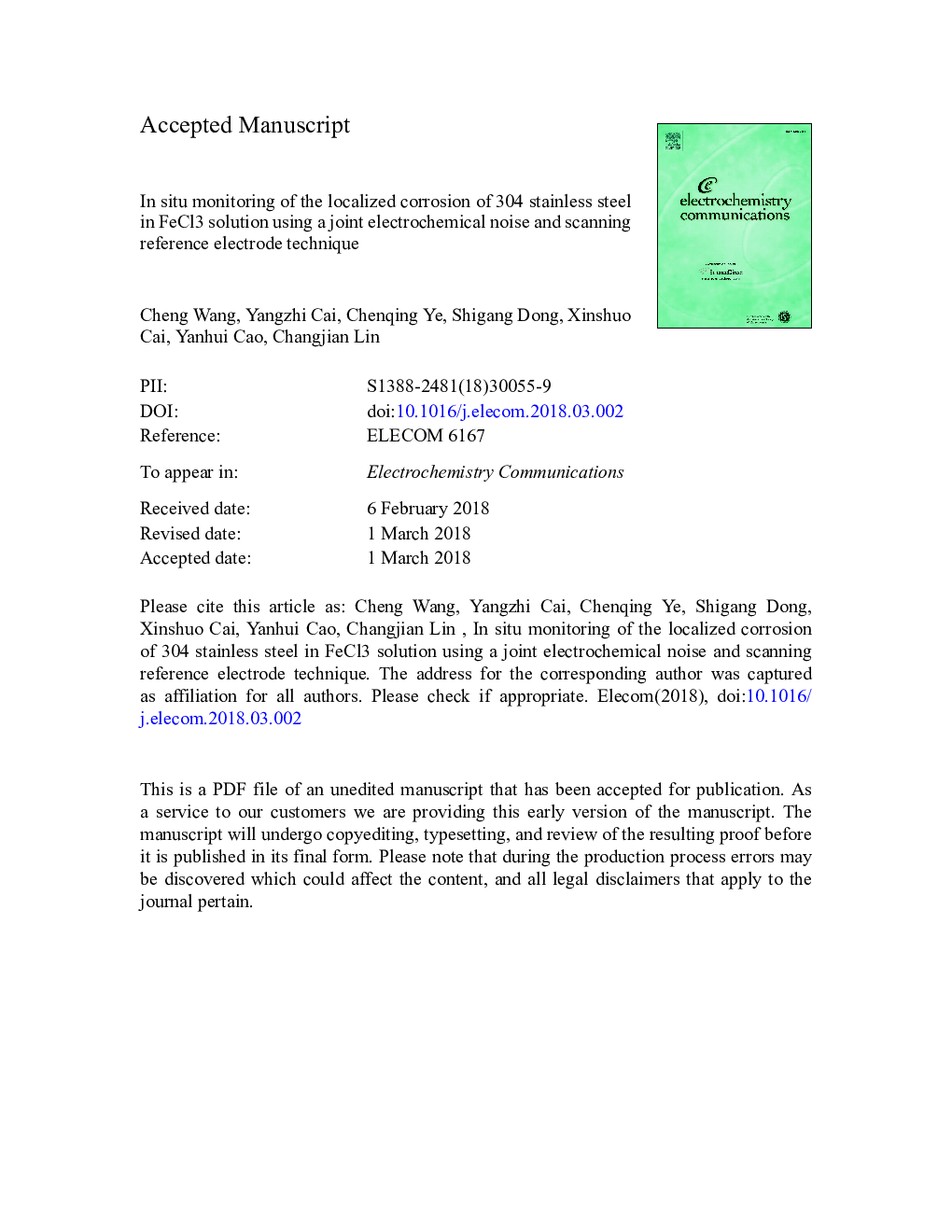| Article ID | Journal | Published Year | Pages | File Type |
|---|---|---|---|---|
| 6600790 | Electrochemistry Communications | 2018 | 13 Pages |
Abstract
Electrochemical noise (ECN) has been adopted as a powerful method of studying early-stage corrosion, but there is a lack of direct in situ evidence to prove the correlation between ECN data and visual corrosion behavior. The advanced scanning reference electrode technique (SRET) assisted by electrochemical scanning tunneling microscopy (ECSTM) can detect local active sites of micro corrosion and follow their initiation and development, and can provide experimental evidence of localized corrosion at the same time as the system is monitored by ECN. To further understand the localized corrosion mechanism of metals, an in situ strategy (ECN/SRET) was developed and used to detect rapid initialization of active corrosion sites, and follow the evolution of pitting corrosion. It is expected that the ECN/SRET combination will prove to be a powerful tool for in-depth studies of localized corrosion.
Related Topics
Physical Sciences and Engineering
Chemical Engineering
Chemical Engineering (General)
Authors
Cheng Wang, Yangzhi Cai, Chenqing Ye, Shigang Dong, Xinshuo Cai, Yanhui Cao, Changjian Lin,
